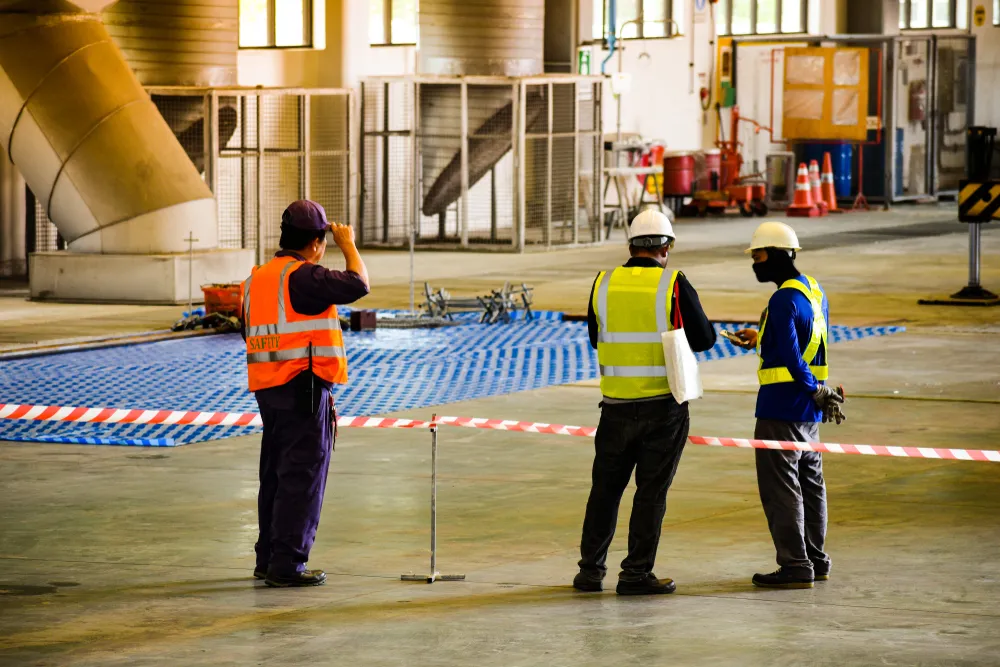The 10-Minute Rule for Roar Solutions
The 10-Minute Rule for Roar Solutions
Blog Article
8 Easy Facts About Roar Solutions Shown
Table of ContentsRoar Solutions Can Be Fun For AnyoneAbout Roar SolutionsGetting The Roar Solutions To Work
In order to protect installments from a potential surge a method of evaluating and classifying a possibly hazardous area is called for. The purpose of this is to make certain the appropriate choice and installment of equipment to inevitably protect against an explosion and to make certain safety and security of life.
(https://www.abnewswire.com/companyname/training.roarsolution.com.au_152691.html#detail-tab)
No equipment must be mounted where the surface temperature of the equipment is above the ignition temperature of the offered threat. Below are some common dirt harmful and their minimal ignition temperature level. Coal Dirt 380C 225C Polythene 420C (thaws) Methyl Cellulose 420C 320C Starch 460C 435C Flour 490C 340C Sugar 490C 460C Grain Dirt 510C 300C Phenolic Resin 530C > 450C Aluminium 590C > 450C PVC 700C > 450C Soot 810C 570C The probability of the hazard being existing in a concentration high adequate to create an ignition will certainly vary from place to place.
In order to identify this danger an installation is divided right into areas of risk depending upon the quantity of time the harmful is existing. These areas are described as Areas. For gases and vapours and dusts and fibres there are 3 zones. Area 0 Zone 20 An unsafe ambience is highly likely to be present and might exist for extended periods of time (> 1000 hours each year) or also constantly Zone 1 Zone 21 A harmful environment is feasible but not likely to be existing for extended periods of time (> 10 450 C [842 F] A category of T6 implies the minimum ignition temperature level is > 85 C [185 F] Harmful location electric devices maybe developed for use in greater ambient temperature levels. This would indicated on the ranking plate e.g. EExe II C T3 Ta + 60C( This implies at 60C ambient T3 will not be gone beyond) T1 T1, T2, T3, T4, T5, T6 T2 T2, T3, T4, T5, T6 T3 T3, T4, T5, T6 T4 T4, T5, T6 T5 T5, T6 T6 T6 A T Class ranking of T1 implies the optimum surface temperature level produced by the tool at 40 C is 450 C. Thinking the connected T Course and Temperature ranking for the devices are appropriate for the location, you can constantly utilize a tool with a much more stringent Department ranking than required for the location. There isn't a clear solution to this inquiry sadly. It actually does depend on the sort of tools and what repair services need to be accomplished. Devices with certain test treatments that can not be carried out in the area in order to achieve/maintain 3rd party ranking. Should return to the manufacturing facility if it is prior to the equipment's service. Area Fixing By Authorised Personnel: Complicated testing may not be needed however certain treatments may require to be adhered to in order for the equipment to maintain its third celebration ranking. Authorised workers have to be employed to execute the job correctly Repair work have to be a like for like replacement. Going Here New element need to be considered as a direct replacement requiring no special testing of the equipment after the repair is total. Each tool with a harmful ranking need to be evaluated separately. These are detailed at a high degree below, but also for more in-depth information, please refer directly to the guidelines.
Roar Solutions - Questions
The devices register is a thorough database of tools documents that consists of a minimum collection of fields to determine each thing's area, technological criteria, Ex classification, age, and ecological information. The proportion of Comprehensive to Close inspections will be established by the Devices Danger, which is analyzed based on ignition danger (the likelihood of a source of ignition versus the possibility of a flammable atmosphere )and the unsafe area classification
( Zone 0Area 1, or 2). Applying a robust Risk-Based Evaluation( RBI )method is critical for guaranteeing conformity and safety in managing Electric Equipment in Hazardous Locations( EEHA).
Some Known Details About Roar Solutions

In regards to eruptive risk, a dangerous location is a setting in which an eruptive atmosphere is present (or may be anticipated to be existing) in amounts that need special preventative measures for the construction, installment and use tools. Roar Solutions. In this article we check out the difficulties faced in the workplace, the risk control actions, and the needed expertises to work securely
These materials can, in particular conditions, develop eruptive ambiences and these can have significant and heartbreaking consequences. Most of us are familiar with the fire triangular get rid of any kind of one of the three elements and the fire can not occur, however what does this mean in the context of harmful locations?
In the majority of circumstances, we can do little about the levels of oxygen in the air, however we can have considerable impact on resources of ignition, as an example electric tools. Harmful locations are recorded on the dangerous area classification illustration and are recognized on-site by the triangular "EX-SPOUSE" indicator. Here, among various other vital information, zones are split right into 3 kinds depending on the risk, the probability and duration that an explosive ambience will exist; Zone 0 or 20 is deemed one of the most dangerous and Zone 2 or 22 is considered the least.
Report this page